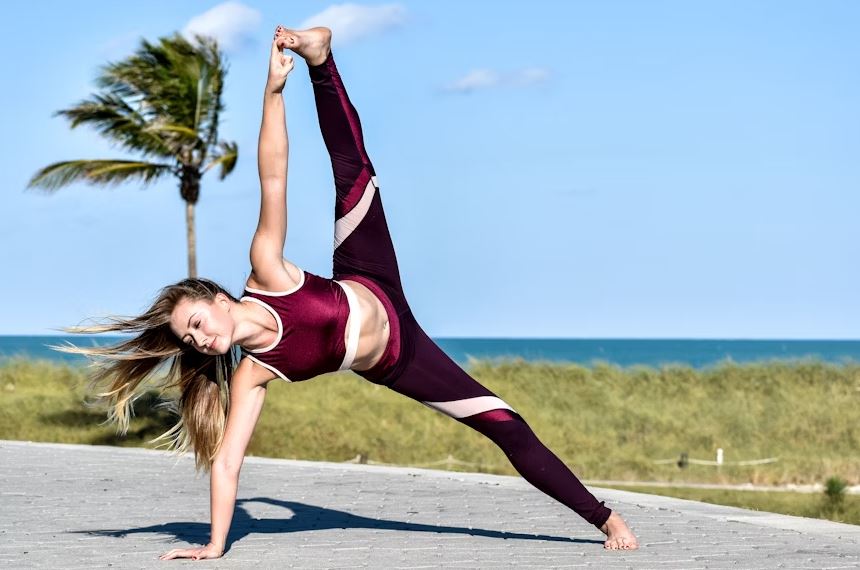In today’s world, many of us spend hours sitting at desks, looking at screens, or commuting in cars. This often leads to rounded shoulders, stiff necks, and back pain. Over time, poor posture can affect not only how we look but also how we breathe, move, and feel. Yoga offers a natural way to counteract these issues by strengthening the spine, improving alignment, and releasing tension.
In this guide, we’ll explore yoga poses for better posture and back health, along with step-by-step instructions and tips for safe practice.
Why Posture and Back Health Matter
- Prevents pain: Good posture reduces strain on the spine and muscles.
- Boosts confidence: Standing tall makes you appear more confident and energetic.
- Supports breathing: Proper alignment allows for deeper, fuller breaths.
- Improves mobility: A healthy spine moves with ease in all directions.
- Protects long-term health: Reduces the risk of chronic back issues.
10 Yoga Poses for Better Posture and Back Health
1. Mountain Pose (Tadasana)
A foundational pose that teaches alignment and balance.
How to practice:
- Stand with feet hip-width apart.
- Press evenly through both feet.
- Lengthen the spine and relax shoulders.
- Keep chin parallel to the floor.
- Hold for 5–10 breaths.
2. Cat-Cow Stretch (Marjaryasana-Bitilasana)
Improves spinal flexibility and relieves back tension.
How to practice:
- Start on hands and knees.
- Inhale, arch the back and lift chest (Cow).
- Exhale, round the spine and tuck chin (Cat).
- Continue for 8–10 cycles.
3. Cobra Pose (Bhujangasana)
Strengthens the back while opening the chest and shoulders.
How to practice:
- Lie on your stomach, place palms under shoulders.
- Inhale, press into hands, and lift chest.
- Keep elbows slightly bent, shoulders relaxed.
- Hold for 5 breaths.
4. Bridge Pose (Setu Bandhasana)
Strengthens the spine and opens the chest for better posture.
How to practice:
- Lie on your back with knees bent, feet flat.
- Press into feet and lift hips.
- Clasp hands under the body if comfortable.
- Hold for 5–8 breaths.
5. Child’s Pose (Balasana)
A gentle stretch that relaxes the spine and shoulders.
How to practice:
- Kneel on the mat, big toes together, knees apart.
- Fold forward, extending arms ahead.
- Rest forehead on the floor.
- Stay for 1–2 minutes.
6. Plank Pose (Phalakasana)
Builds core strength to support the spine.
How to practice:
- Start in a push-up position with wrists under shoulders.
- Keep body in a straight line from head to heels.
- Engage the core and hold for 20–40 seconds.
7. Locust Pose (Salabhasana)
Strengthens the lower back and improves spinal support.
How to practice:
- Lie on your stomach with arms by your sides.
- Inhale, lift chest, arms, and legs off the floor.
- Keep neck long and gaze forward.
- Hold for 5 breaths.
8. Seated Forward Bend (Paschimottanasana)
Stretches the spine and relieves tension in the back.
How to practice:
- Sit with legs extended forward.
- Inhale, lengthen the spine.
- Exhale, fold forward over legs.
- Hold for 5–8 breaths.
9. Extended Triangle Pose (Trikonasana)
Improves spinal alignment and opens the chest.
How to practice:
- Stand with feet wide apart.
- Turn one foot out and extend arms sideways.
- Reach forward and place hand on shin or block.
- Extend the other arm upward.
- Hold for 5 breaths each side.
10. Corpse Pose (Savasana)
Encourages full relaxation and body awareness.
How to practice:
- Lie flat on your back with arms at sides.
- Close eyes and breathe naturally.
- Stay for 5–10 minutes.
Tips for Practicing Yoga for Posture
- Be consistent – A few minutes daily can correct years of poor posture.
- Strength and stretch balance – Build core and back muscles while releasing tight shoulders and hips.
- Use props – Blocks, straps, or cushions help maintain alignment.
- Focus on breathing – Deep breathing supports spinal health.
- Listen to your body – Avoid forcing movements into pain.
Poor posture and back pain don’t have to be permanent. By practicing these yoga poses for better posture and back health, you’ll strengthen your spine, open your chest, and release tension. Over time, you’ll notice yourself standing taller, moving more freely, and feeling more confident.
A healthy back supports a healthy life—so roll out your mat, take a deep breath, and start your journey toward better posture today.
